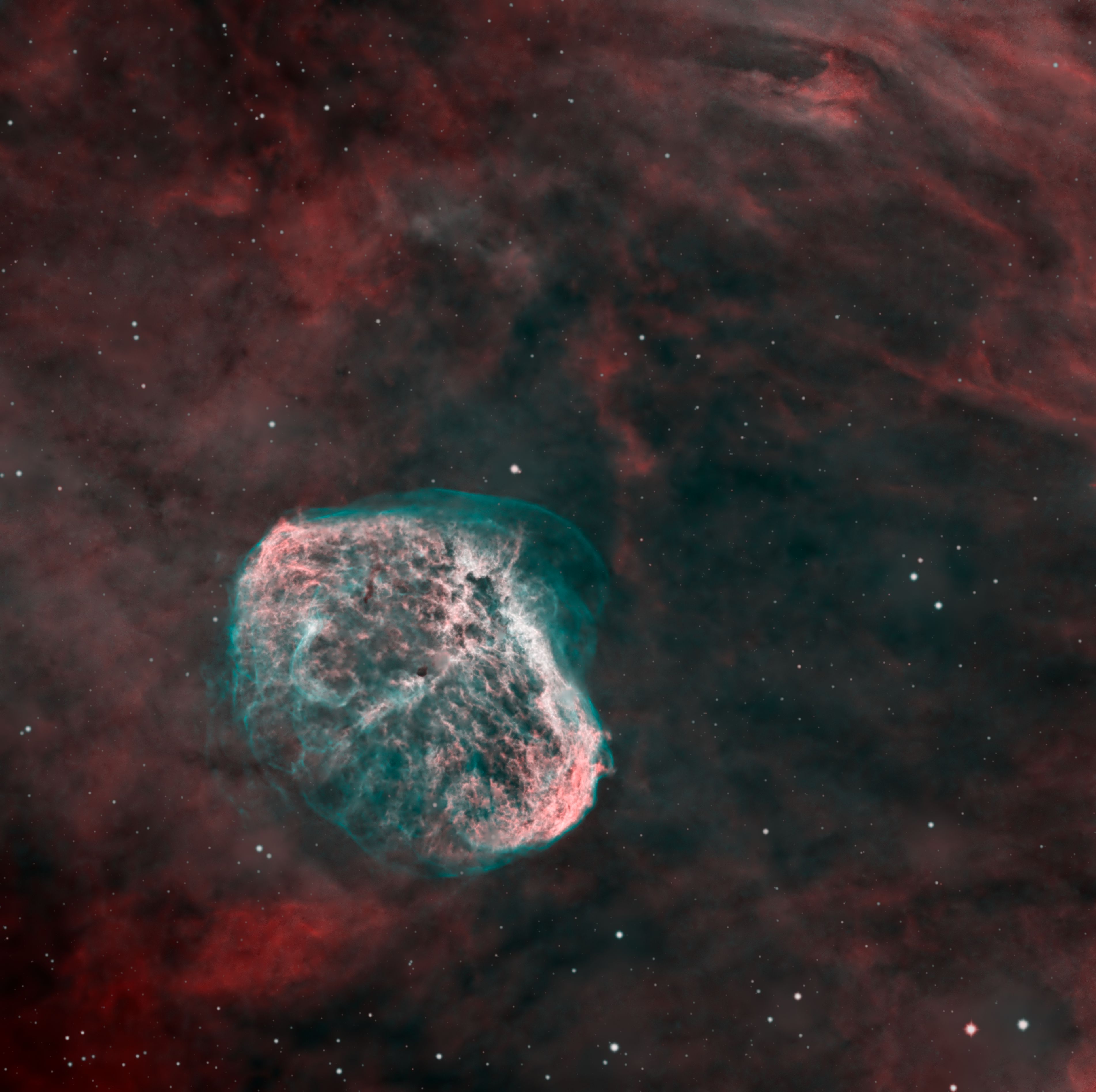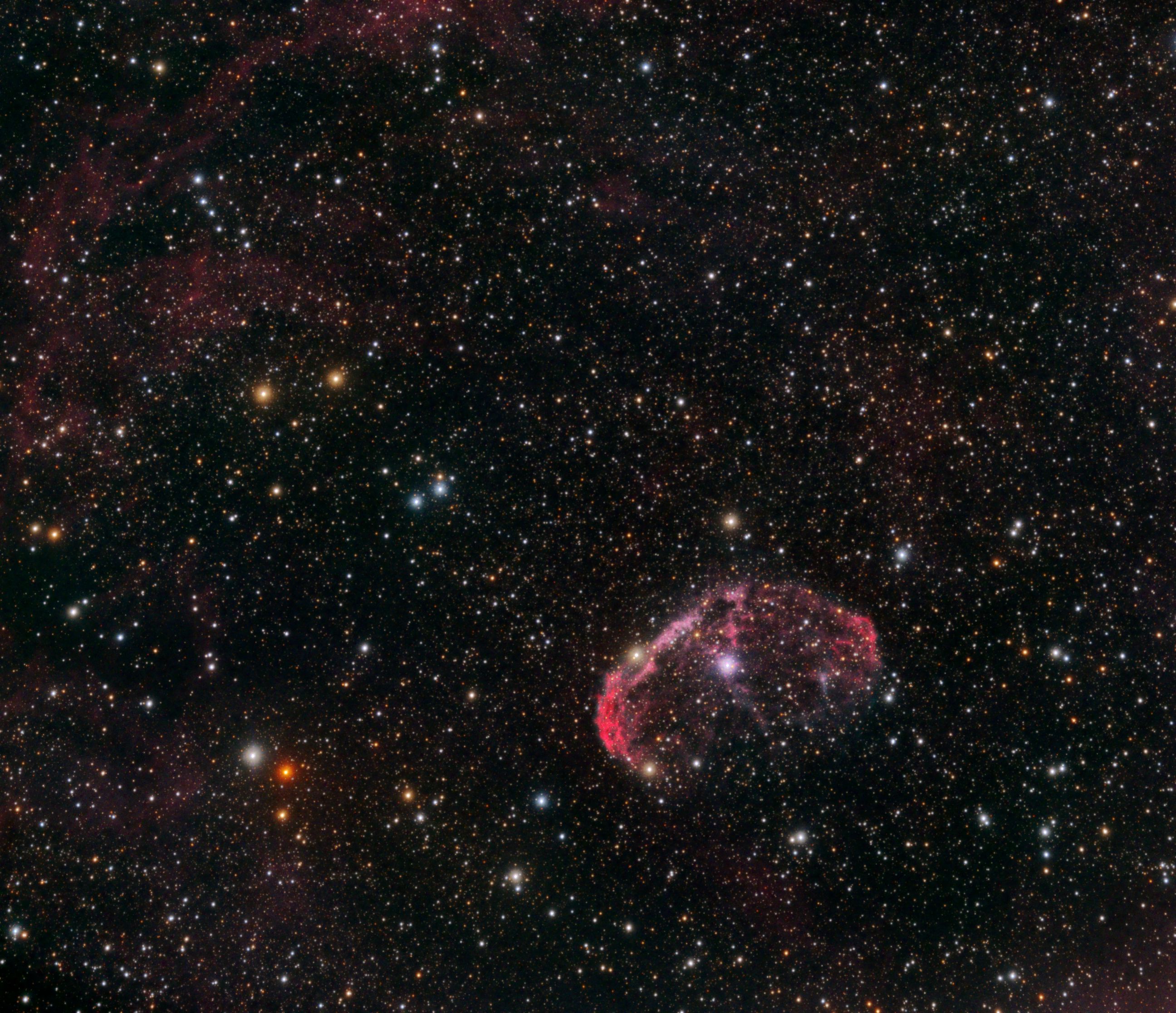I’ve learned some new techniques and I reprocessed the data collected earlier. The result is more detail and a more vibrant image. The image below was the earlier processing attempt from back in August 2021.
This is my second attempt at the Crescent Nebula, this time in HOO narrowband and with the telescope at SRO. The Crescent, also known as NGC 6888, is an emission nebula. According to Wikipedia it is caused by the fast stellar wind from a Wolf Rayet star running into a slower, earlier stellar wind. Visually, if it can be seen at all, it tends to look like a crescent shape which is the source of the name. Narrowband filters make the entire shell stand out and the wrinkly appearance looks somewhat like brain coral to me.
This is 32.5 hours of integration, 14 hydrogen alpha and 18.5 oxygen III.
Processing was relatively straightforward until the very end where I used masks to do some extra contrast work on the OIII to help it stand out a bit more. I also pushed the background hydrogen signal down a bit to help the Crescent bubble stand out from the background a bit more.
For all the technical details, see the astrobin link.
By comparison, this the earlier version I did of the Crescent using RGB filters:
It’s reversed because of different optical systems but the real difference is how much detail the newer version with narrowband filters has. There are other reasons as well like finer image scale and darker skies but in this particular case, it’s narrowband filters making the biggest difference.


